|
5C Program's Stormwater Management Handbook-
Overview
 The purpose of the 5C Program's Stormwater Management Handbook is to provide a user-friendly, guide outlining best management practices for managing stormwater so that it has minimal impacts on watershed health and salmon populations. The target audience includes landowners, county planning departments, and the general public. As with any 5C product, whether county planning departments use the Handbook, and if so, to what extent, is up to each individual county; the Handbook is available for their reference. Periodic updates and revisions are anticipated based on feedback and monitoring. The purpose of the 5C Program's Stormwater Management Handbook is to provide a user-friendly, guide outlining best management practices for managing stormwater so that it has minimal impacts on watershed health and salmon populations. The target audience includes landowners, county planning departments, and the general public. As with any 5C product, whether county planning departments use the Handbook, and if so, to what extent, is up to each individual county; the Handbook is available for their reference. Periodic updates and revisions are anticipated based on feedback and monitoring.
What is Low Impact Development?
Low Impact Development (LID) is a collection of methods (aka Best Management Practices or BMPs) that preserve natural resources and collect and clean stormwater runoff to protect and improve water quality and
availability. One of the main principles is to simulate natural drainage patterns and incorporate vegetation and
natural materials into stormwater facilities. The Puget Sound Partnership defines LID as "a stormwater and land
use management strategy that strives to mimic pre‐disturbance hydrologic processes of infiltration, filtration,
storage, evaporation and transpiration by emphasizing conservation, use of on‐site natural features, site
planning, and distributed stormwater management practices that are integrated into a project design." LID may
also be referred to as Green Infrastructure, Green Development Practices, or Alternative Storm Water
Management Systems.
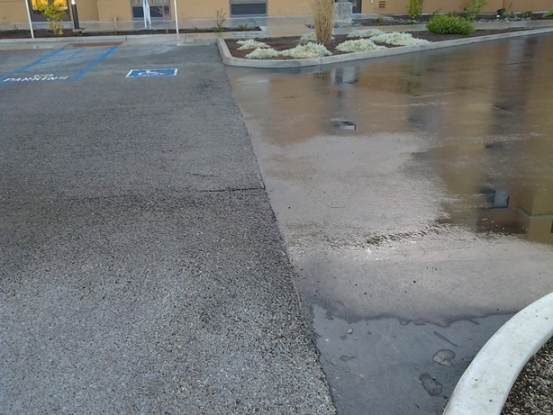 There are over 200 best management practices (BMPs) that may be used to improve watershed health. BMPs
may fall into two categories: There are over 200 best management practices (BMPs) that may be used to improve watershed health. BMPs
may fall into two categories:
Non-structural BMPs
These are restoration and protection practices often employed during the early planning phase, but may also
appear during other project phases. This includes choosing low impact techniques over conventional ones and
also selecting natural approaches over ones that require more physical structures.
- Relative Effectiveness: High
- Relative Cost: Low
Structural BMPs
These are mitigation strategies or facilities designed to reduce impact from either past or future development.
- Relative Effectiveness: Low to Moderate
- Relative Cost: High
Why Use Low Impact Development?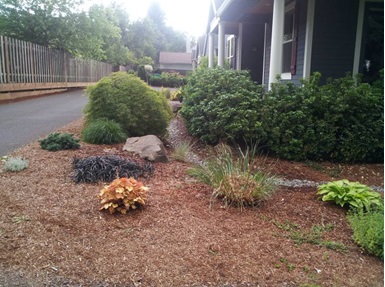
In undeveloped areas, very little rainwater or snowmelt runs off the land like it does in urbanized towns and
cities. Trees, plants, and soil capture much of the precipitation, and some of it evaporates back into the air. Most
of the precipitation that doesn't evaporate or get captured by vegetation soaks into the ground where soil and
microbes remove pollutants naturally. The water slowly recharges streams, wetlands and groundwater. Very
little runs off, except in very large storms. The natural terrain acts like a sponge.
This natural hydrologic cycle is radically altered when land is developed and the way it has been for decades is
changed. Typical development clears the land of vegetation and covers it with hard surfaces such as roads, parking
lots, and rooftops. Construction and foot traffic compact soils, so that even landscaped areas can generate
unnaturally high runoff volumes. Storm drains are installed to get water out of the way by sending it into local
streams or injecting it underground without treatment. Development dramatically increases runoff volumes. Even
when controlled by detention basins, this causes flooding, damages fish and wildlife habitat, and delivers pollutants
such as oils and pesticides to local waterways. The decreased infiltration results in: less cool, clean groundwater
to recharge streams in the dry summer months; and in a reduction in water availability throughout the watershed.
LID practices may be incorporated into existing as well as newly built developments in a community. They
increase groundwater supplies and reduce the negative water quality impacts to streams and fish habitat,
flooding, and in many cases, the cost of stormwater treatment and infrastructure. They are aesthetically pleasing
and have been shown to increase real estate values.
Navigating the 5C Program's Stormwater Management Handbook
The summary below outlines the available guidance on stormwater management through the 5C Program to help ensure that you have all the
information you need to plan, design, construct, and maintain best management practices. You can navigate the material in a few different
ways: by topic, by specific practice, or by the function you want to achieve.
By Topic
Guidance is organized by overarching topic. In each fact sheet, we've strived to create easy‐to‐understand text and illustrations on implementation, cost considerations, and relative benefits to watershed and water conservation efforts. In the table below, guidance is ordered
by relative cost for new development. In retrofits, where stormwater management is not required, managing stormwater with Low Impact
Development (LID) or even with conventional approaches will require an initial investment. However, there are many benefits of stormwater
management that are not easy to quantify in dollars. Certain practices, such as those that capture stormwater, can actually save money in the
long‐term. In some case, effectiveness will probably be the driving factor for decision‐making.
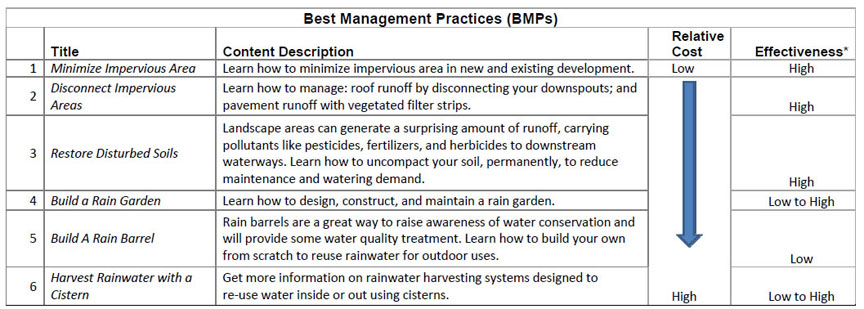
* This rating refers to the effectiveness of stormwater management. These techniques offer other benefits such as water conservation with a good rate of
effectiveness.
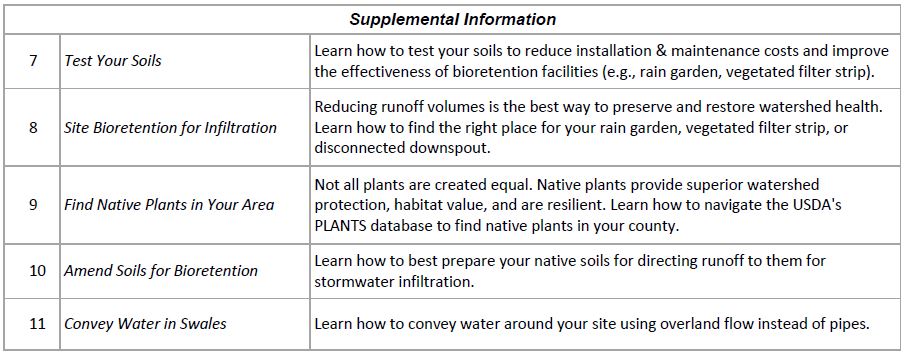
Implement Specific Practices
If you're already pretty familiar with using best management practices or have something in mind already for other reasons, refer to the table
below to see which guidance topics you'll need to gather before starting your project.
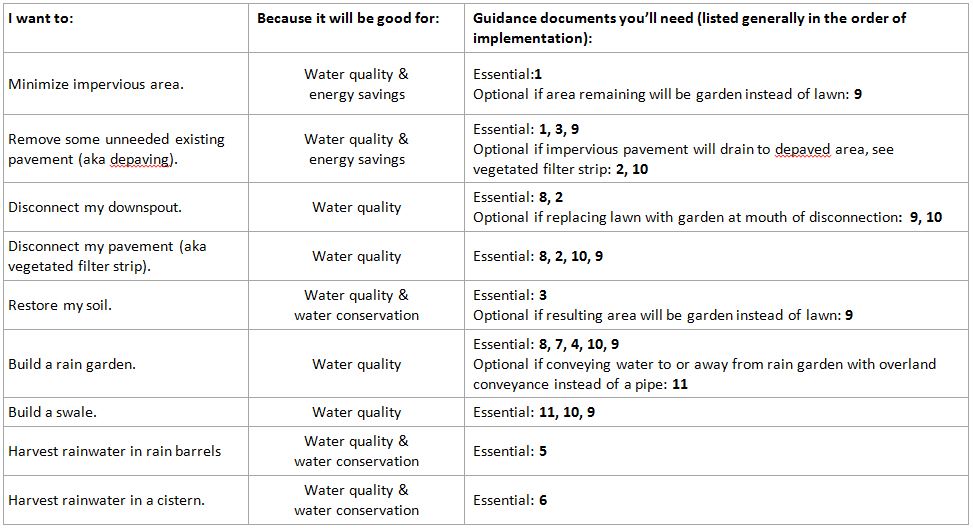
Functional Checklist Approach
If you have some idea of what practices you'd like to use, but would like to explore additional approaches, then use this checklist approach
below. Available resources are listed by how they work to protect watershed health. If best management approaches perform more than one
function, they're listed in all relevant categories. Guidance that is essential or optional for implementation is listed with numbers corresponding
to the topics table above.
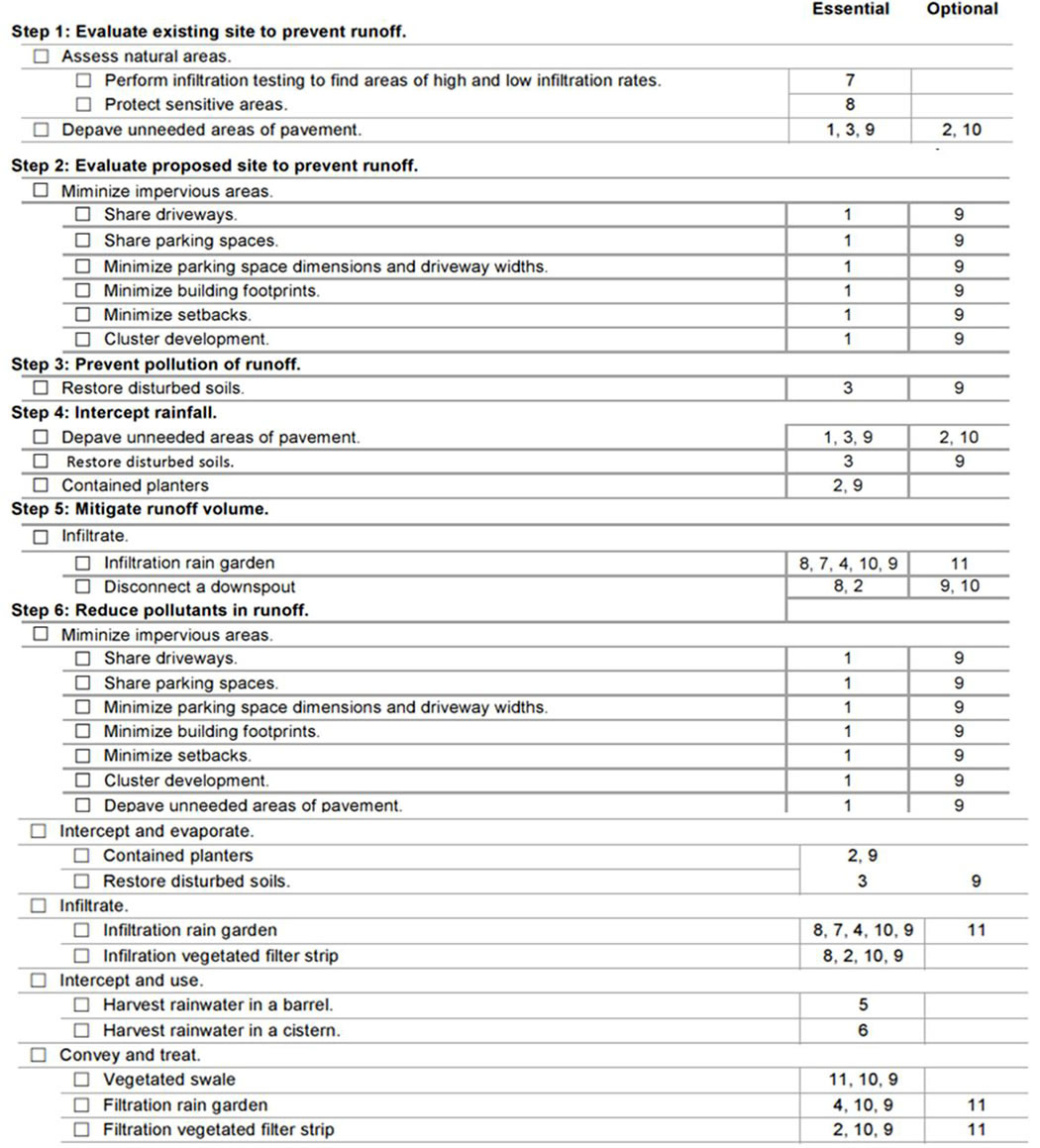
Download/View the 5C Program Stormwater Management Handbook:
View each Chapter or download (pdf):
For more information, contact us
©2012. Five Counties Salmonid Conservation Program and Green Girl Land Development Solutions. The 5C Program Stormwater Management Handbook may be photocopied or reprinted in its entirety for noncommercial purposes.
Back to Land Use Planning page
Back to Programs Page
| 